I ordered a sweater's worth of Knit Picks Shine Worsted in the color Citrine last month, for the Primrose Path sweater from Twist Collective. Unfortunately, when the yarn arrived, it was totally not my color. I could barely stand it. Of course, that's a risk one takes when ordering yarn online without seeing it in real life, and I knew that before I ordered. I had a choice: ditch the yarn, or dye it.
I've done a bit of dyeing before, but Shine is a cotton/modal blend - I've only ever dyed animal fibers before.
Cotton doesn't dye the same way that wool does, so I needed a different type of dye to do it. On wool or other animal fibers, I would just dye with food coloring and some lemon juice, or similar - but that wouldn't work on cotton, so I went to the craft store and got some Jacquard iDye. iDye is a fiber-reactive dye that works on all natural fibers and rayon. Since modal is a type of rayon, iDye will dye both the fibers in Knit Picks Shine. For polyester and nylon, there is a special formulation, iDye Poly.
I picked up the iDye because it was on sale and it looked particularly easy to use - you can dye in the washing machine! Here's the step-by-step dyeing process.
I started with 14 balls of Shine in Citrine.

First, I wound those balls by hand into center-pull balls, for ease of skein-winding.
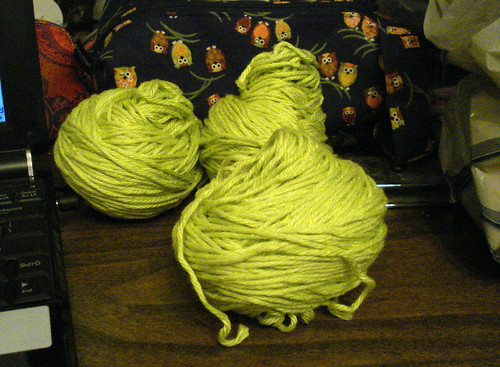
Then, I wound all my balls into hanks using my electric skein winder.
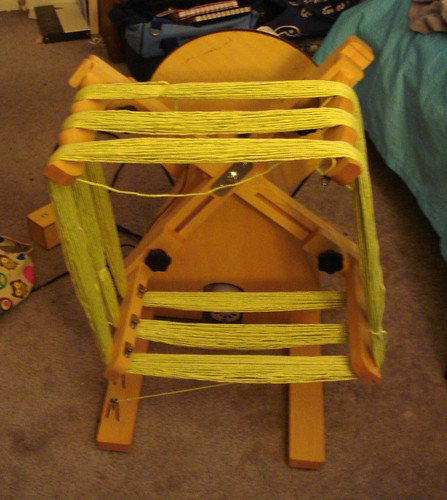
I made sure to tie the hanks securely in several places. Actually, I tied each skein three times individually, and then I tied sets of three skeins together into larger mega-skeins.
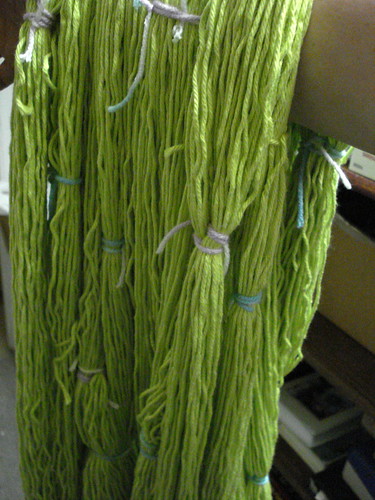
Once I had my skeins wound and securely tied, I was ready to start dyeing.
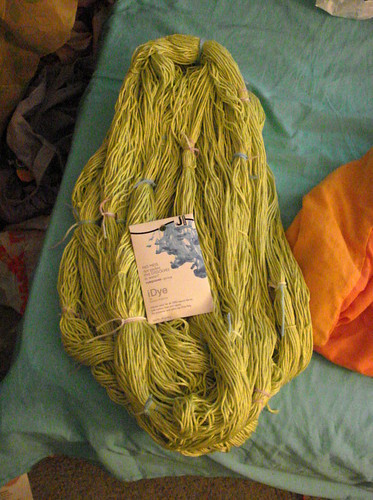
The dye comes in a little packet which will dissolve in water. You toss the packet into the wash and run the cycle. My shade of iDye is called 'turquoise', but I think it's on the bluer side of the scale. Since I was overdyeing some yarn, I can't be sure what color it would dye something that was white.
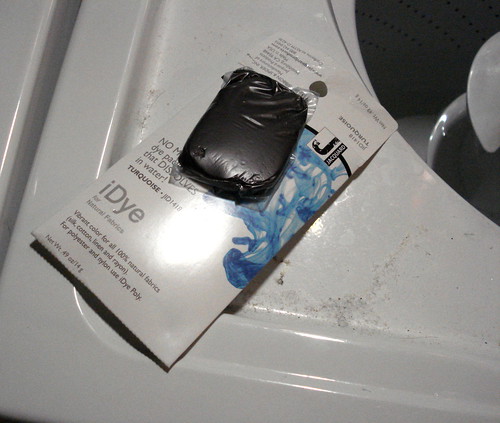
Adding a little salt to the wash will set the colors.
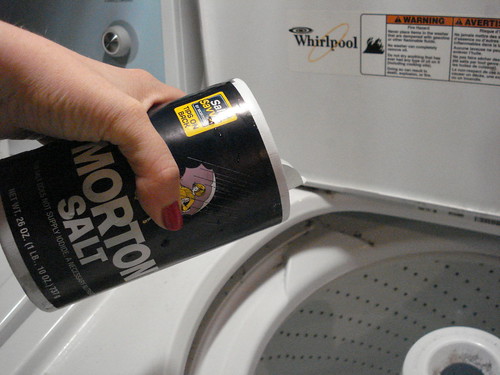
Then I wet my yarn, tossed it all into the machine, and ran the cycle. I extended the cycle a little bit, and also ran an extra rinse to ensure all the color was washed out.

How did my yarn come out? Fairly well! The color is now a fairly bright, lush blueish green. Color saturation is mostly even - there are a couple spots which escaped dyeing, and all in all I think the yarn will produce a very subtle kettle-dyed effect - just enough variation to keep the color from looking flat. I imagine the dye would have been even more even if I had let the yarn soak in water longer before dyeing.

The one problem with this method is that my skeins came out tangled. Very tangled. The dye is mostly meant for fabric, not yarn, and the agitation of the washing machine tangled up the skeins really well. I would also not recommend this method for wool yarn, for obvious reasons. But it works for my purposes - I needed a cheap, easy way of over dyeing a cotton and rayon blend yarn. It will take some time for me to untangle and wind my skeins into balls, but I don't really mind. It's something to keep my hands busy while watching TV.
~Joyuna

 The Grateful Crane Shawl
The Grateful Crane Shawl Elven Slippers
Elven Slippers Russell Square Mitts
Russell Square Mitts Russell Square Tam
Russell Square Tam iTouch Jumper
iTouch Jumper Twisty Wristband
Twisty Wristband Mawata Pulsewarmers
Mawata Pulsewarmers
pretty colour! You're very brave. :)
ReplyDelete